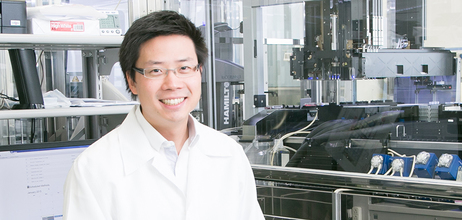Unit Leader

Making sense of gene networks
* Due to the reorganization starting as new centers in April 2018, this laboratory is now belong to the Center for Integrative Medical Sciences. As for the latest information, please see the following URL below.
> The webpage of Laboratory for Advanced Genomics Circuit, Center for Integrative Medical Sciences

Team Leader
Jay W. Shin
W 406 1-7-22 Suehiro-cho Tsurumi-ku Yokohama 230-0045 JAPAN
Tel: +81-(0)45-503-9111 (Ext. 8397)
![]()
Human somatic cells have the ability to convert into another cell type by introducing a set of defined factors. These so called reprogrammed-cells are applicable in regenerative medicine, disease modeling, and drug discovery. My unit focuses on the development of key technologies to achieve multitude of cell conversions using both high-throughput robotics and single-cell “multiplex” screening system. These systems integrate with Next Generation Sequencers (NGS) to map the network of mediators, such as transcription factors, noncoding RNAs and epigenetic factors, that are involved in the regulation of (direct) cellular reprogramming.
CLST was reorganized into three centers according to the RIKEN 4th Medium-Term Plan from April 1, 2018. For the latest information of Cell Conversion Technology Team, please visit the following websites.
> The webpage of Laboratory for Advanced Genomics Circuit, Center for Integrative Medical Sciences [http://www.ims.riken.jp/labo/66/index.html]
> If you continue to browse this site, click here.